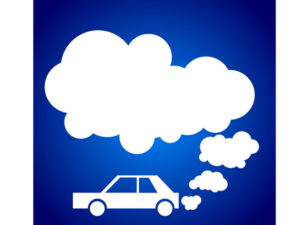Government’s Clean Air Strategy leaves ‘transport-shaped hole’
The Government has published its draft Clean Air Strategy, covering a variety of issues including air pollution from farming and domestic fuels but with minor action on pollution from transport.

ClientEarth says the Clean Air Strategy must take more action on transport
Published alongside last year’s Air Quality Plan from Defra and the DfT, the Clean Air Strategy, which is open for consultation until 14 August, is being developed by Defra in response to an EU air quality law called the National Emission Ceilings (NEC) Directive. This sets legally binding emission reduction targets for five pollutants, including NOx and PM2.5, from across all sectors, such as agriculture, industry and transport.
The new plan does address pollution from agriculture and industry but has come under fire from ClientEarth – whose legal action resulted in the publication last year of the latest Air Quality Plan – for taking little action on transport.
The main proposals in the Clean Air Strategy relating to transport cover:
- Work to research and develop new standards for tyres and brakes to address toxic non-exhaust emissions.
- New clean air legislation that will enable the Transport Secretary to compel manufacturers to recall vehicles and machinery for any failures in their emissions control system, and make tampering with an emissions control system a legal offence.
- The creation of a new statutory framework for Clean Air Zones (CAZ) to simplify current overlapping frameworks of CAZ, AQMA and Smoke Control Areas to create a single approach covering all sources of air pollution.
Other, more generic measures include the introduction of new primary legislation, which will give local government new powers to improve air quality, and the creation of a personal air quality messaging system to inform the public, particularly those who are vulnerable to air pollution, about the air quality forecast, providing clearer information on air pollution episodes and accessible health advice.
In response to the proposals, ClientEarth CEO James Thornton said: “Road transport is still the main source of illegal air pollution in our towns and cities. We need a national network of Clean Air Zones to take the most polluting vehicles out of the most polluted areas.
“We also want the government to commit to a new Clean Air Act fit for the 21st Century. Ministers should enshrine people’s right to breathe clean air in UK law and drive greater ambition to protect their health.”
His comments were echoed by the Mayor of London, Sadiq Khan, who said: “The Government must move much faster if we are going to tackle London’s filthy air. I’ve already introduced hard-hitting measures like the Toxicity Charge – the T-Charge – for the oldest polluting vehicles in central London, bold programmes to clean up our bus and taxi fleet and I’m bringing forward the introduction of the world’s first Ultra-Low Emission Zone.
“Ministers need to match our urgency and provide the real resources and extra powers cities around the country need, plus a new environmental watchdog with teeth that is fit for purpose, as well as introducing a national scrappage fund to get the dirtiest, most polluting vehicles off our streets now.”

















